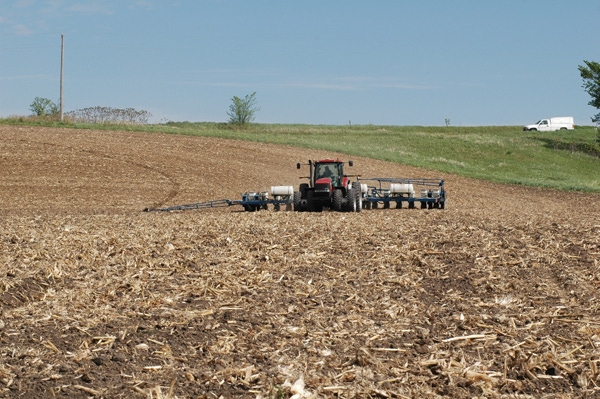February 15, 2012

A drought threat posed across southern and western Minnesota is the most serious in over a decade, according to University of Minnesota Extension Climatologist Mark Seeley. Climate outlooks currently favor more rain than normal this spring across much of the state, but it might not be enough, Seeley says: “Many areas are so deficient in stored soil moisture they will need 150-200% of normal rainfall during March and April to make up the difference.”
Here are some measures farmers should consider for a planting-season drought:
Consider crop insurance.Producers who take out a loan for inputs are usually required to buy crop insurance. Kent Olson, Extension economist, says others will want to strongly consider it this year. March 15 is the standard deadline for finalizing a plan with your agent for crop insurance.
If soils remain dry, planting season could arrive early. Jeff Coulter, Extension corn agronomist, recommends that growers avoid planting corn before April 18 to reduce the risk of frost damage to young corn plants.
Conserve moisture in the seed zone.Uniform emergence is important for corn. This requires good seed-to-soil contact and adequate moisture in the seed zone, according to Coulter. If dry conditions persist at planting, he advises growers to prepare seed beds close to planting and avoid unnecessary tillage passes.
Consider pre-emergence herbicides to reduce weed competition with corn and soybean, since yield loss due to early-season weed competition is greatest in dry years. According to Jeff Gunsolus, Extension weed scientist, most pre-emergence herbicides are activated with just ½ in. of rainfall. This is similar to the amount needed to stimulate early-season weed flushes. Even if dry weather follows a pre-emergence herbicide, it can still be activated by later rainfall.
Target post-emergence herbicide applications to small weedsthat are no taller than 2 in., Gunsolus says. Larger weeds are more difficult to control if they are drought stressed and they also compete more with corn and soybean for water and nutrients.
Find more information on drought preparation at www.extension.umn.edu/drought.
You May Also Like




